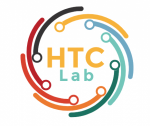Collaborative human-AI (HAI) teaming combines the unique skills and capabilities of humans and machines in sustained teaming interactions leveraging the strengths of each. In tasks involving regular exposure to novelty and uncertainty, collaboration between adaptive, creative humans and powerful, precise artificial intelligence (AI) promises new solutions and efficiencies. User trust is essential to creating and maintaining these collaborative relationships. Established models of trust in traditional forms of AI typically recognize the contribution of three primary categories of trust antecedents: characteristics of the human user, characteristics of the technology, and environmental factors. The emergence of HAI teams, however, requires an understanding of human trust that accounts for the specificity of task contexts and goals, integrates processes of interaction, and captures how trust evolves in a teaming environment over time. Drawing on both the psychological and computer science literature, the process framework of trust in collaborative HAI teams (CHAI-T) presented in this paper adopts the tripartite structure of antecedents established by earlier models, while incorporating team processes and performance phases to capture the dynamism inherent to trust in teaming contexts. These features enable active management of trust in collaborative AI systems, with practical implications for the design and deployment of collaborative HAI teams.
Latest posts by Ryan Watkins (see all)
- Your Brain on ChatGPT: Accumulation of Cognitive Debt when Using an AI Assistant for Essay Writing Task - June 19, 2025
- The Memory Paradox: Why Our Brains Need Knowledge in an Age of AI - June 13, 2025
- Artificial Intelligence Software to Accelerate Screening for Living Systematic Reviews - June 13, 2025
